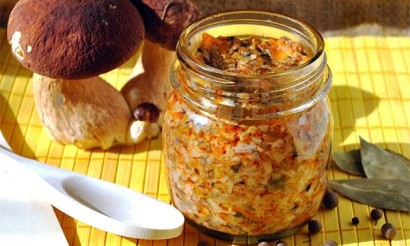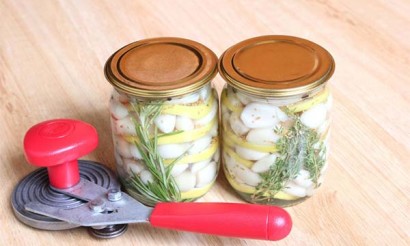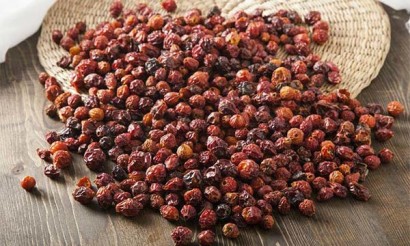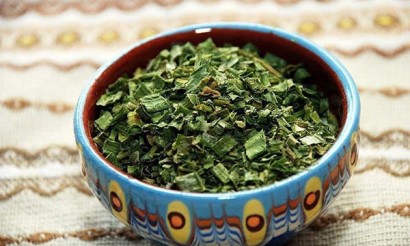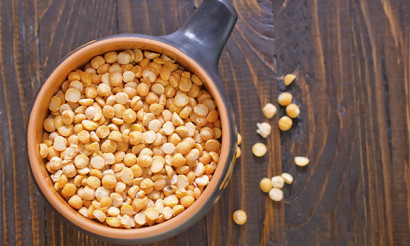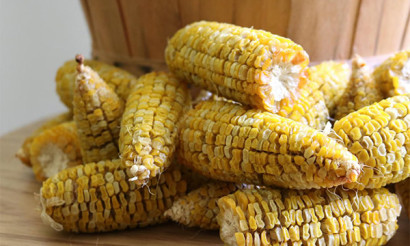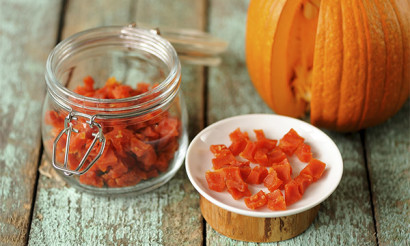How to Dry Dill at Home
Today fennel is a well known and for some people commonplace spice, but ancient Romans honored and respected this plant, and even gave bunches of it to their lovers as a sign of their great affection. The plant was once brought to Europe and Russia from Asian countries, where it grew wild until people invented to add it to food.
- What varieties of dill are suitable for drying
- How to prepare herbs for drying
- How to Dry Dill
- In the oven
- In an electric dryer
- In a microwave oven
- In the fridge
- In the sun
- How to Check Dill Done
- How to Store Dried Dill
- How to use dried dill
- Where to use dried dill
- What is better: to freeze or dry dill
What varieties of dill are suitable for drying
Since dill can be harvested throughout the summer season, it is easy to choose such varieties of plants so that they grow and are ready for harvesting not simultaneously, but gradually. This requires a combination of early-ripening, medium-ripening and late-ripening varieties on the dacha bed.
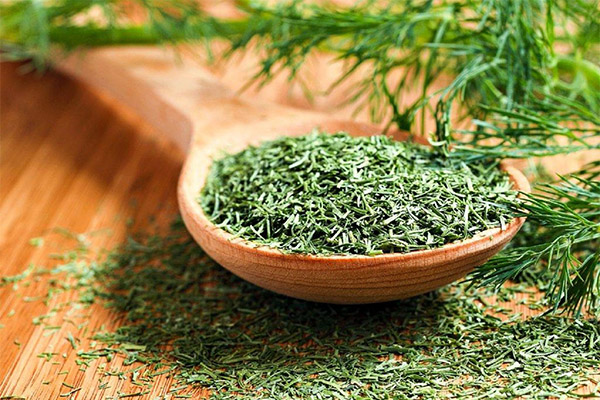
It's better to choose varieties with more foliage, with dense dark greenery. As a rule, they are more fleshy, and they also have a high content of essential oil.
- It can be Alligator, which gardeners say is unpretentious, but high-yielding. It is also a late-ripening variety, and can be sown several times during the season.
- Richelieu first pleases gardeners with beautiful green-blue lace-like leaves, and then also with fragrant greenery. But this dill very quickly forms an umbrella, so it is important to cut it in time, unless, of course, the task is to grow seeds for drying.
- Mischief can be planted early and harvested in just three weeks after sprouting. It is not afraid of frost, and the seeds mature so quickly that they can be used to re-sow for a second crop in the same year.
- When recommending fennel Redut for drying, breeders note that this not very sprawling plant with a waxy patina is distinguished by a special exquisite flavor - the most interesting among all varieties existing in nature in general.
- Experienced gardeners start sowing frost very early - at the beginning of April - in greenhouses. Before planting tomatoes, Iney is able to give a full crop of greens with a bluish-green color, as if covered with a waxy coating, with a very strong aroma.
- The Kutuzovsky variety, which is characterized by a tall - up to a meter - bush, high yield and early maturity, is also recommended for drying.
- Grenadier can be grown even by those who do not have a dacha plot. This very compact dill with a height up to 30 cm is recognized as one of the best varieties for windowsill and balcony, so even in the conditions of a city apartment you can sow, collect a decent harvest and dry it for the winter. Just from a square meter Grenadier will give from 2 to 3 kg of fresh greens, and you can cut it already in 30 days after sprouting.
In addition to the described advantages, all these varieties have a common feature - they are able to maintain a persistent flavor not only until the next year's harvest, but even for several years.
How to prepare herbs for drying
For drying, take not overgrown dill - that is, one that has not yet had time to pop the inflorescence umbrella on a dense, coarse tubular stem. You can harvest it during the whole gardening season, since this herb is usually sown in several stages during the summer, so that young, juicy dill leaves are always on the dinner table. But it is most reasonable to engage in drying at the beginning of summer, when other vegetables and fruits are not yet ripe, so the time of the hostess is not busy making cucumbers, tomatoes and peppers.
If you plan to use dried dill umbrellas - for example, for canning tomatoes or cucumbers, the inflorescences should be cut separately, with small, about 10 cm, segments of the stem.
Dried dill seeds are also used by cooks, but they should be picked for drying even later - when the greens are coarse and the umbrellas are already brown.
It is best to cut the greens in the late morning, when the dew has dried. It is not advisable to do this after rain - at this time the grass becomes heavy, bends heavily, and gets dirty on the ground. It is necessary to wait until it dries and straightens.
From the cut dill you need to pick out and throw away the crumpled, yellowed and dried leaves. Some housewives advise not to wash dill from their own vegetable garden, reasoning that the excess water will quickly spoil the greens. But it is still better to wash, while carefully examining each twig: the same green aphids are very eager for this spicy greens. To see it is difficult, but possible. That's what you need to get rid of it with running water.
Then, to get rid of excess moisture, each bunch should be lightly knocked on a towel, shaking off the drops, and spread out to dry on another towel. It would be nice to have a light draught in the room where dill dries after "bathing".
How to properly dry dill
It is best to dry dill whole sprigs, so the plant will better preserve the useful essential oils. Separate the leaves from the stems after drying, you can additionally crush them by rubbing them with your fingers.
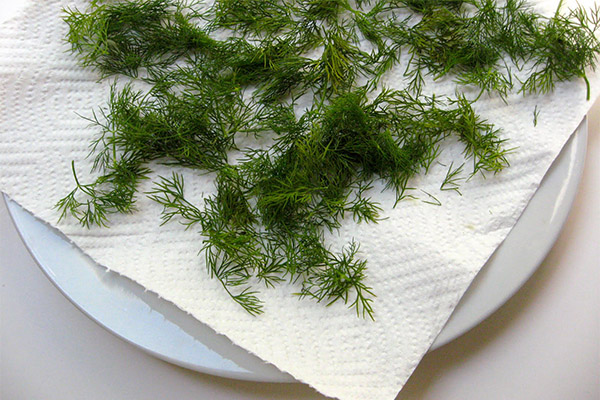
But if it is more convenient to dry in chopped form, it is not forbidden, it is important not to overdo it and not to chop the herbs too finely. You can also chop dried dill right before adding it to a culinary dish.
If you dry dill incorrectly, it will certainly turn yellow. Not only will its appearance be ruined, but it will lose vitamins and other useful substances, including essential oils. Most often the plant turns yellow when it becomes too dry. So you should not let the process run its course, but control it - stir it in time, precisely follow the prescribed drying temperature, and do not lose sight of the other nuances - for example, if it is recommended to cover the greens at a certain point, you should not neglect this advice.
In the oven
To prevent the essential oils from dill from escaping, dry it at the lowest possible temperature. Otherwise, the herb not only loses its useful substances, but also loses its color and becomes unattractive.
First of all, you should line a baking tray with baking paper, and then put chopped dill or whole sprigs on it in an even layer no thicker than 2 cm. Do not let the herbs touch the metal - this threatens them with yellowing, burning and loss of nutrients. The oven door should not be closed - you should allow air to circulate freely and moisture to escape freely from the oven.
As long as the dill has not wilted, the temperature should be kept no higher than 30 degrees, then you can increase to 50. Every half an hour you should take the tray out and stir the herbs so that they dry evenly, at the same time assessing whether they have dried or not. In total, the drying time usually takes 3 to 4 hours.
In an electric dryer.
For the dryer to finely cut dill is absolutely unacceptable: as it dries, the slices will decrease in size and fall through the holes in the trays. It is more convenient if the grass will be cut into 1.3-2 cm pieces. Better yet, spread it out on the trays in whole sprigs. The layer can be up to 2 cm thick, but loose, loose.
If the device has a mode "Herbs", you need to set the regulator to it and then do not worry, the smart device will turn off itself at the set time. It will only be necessary at least once to change the trays of the electric dryer in places: the upper to lower, the lower to raise. In this way the grass will dry more evenly.
If there is no "Herbs" mode on the device, you need to set the temperature to about 40 degrees, and the time - 3 hours. After an hour and a half from the beginning of the process, change the trays. When finished, check to see if the dill is dry, and if necessary, add another half hour to finish drying.
In the microwave
The fastest way to dry dill in the microwave oven. But, although this method is the most high-speed, it is not very convenient when you plan to dry a large amount of herbs: a lot of herbs in the microwave at one time will not put.
A flat plate should be covered with a cotton or paper napkin, spread dill or its sprigs on it as an even layer up to 1.5 cm thick. On top cover the greens with a thin paper napkin and send it to the microwave. Set to maximum power and start the timer for 3 minutes. When the time is up, inspect the dill, stir, and if you need to dry it out a bit more, continue the process, but in short bursts of 30 seconds each. The product may be ready after the first 30 seconds, or it may need to be repeated.
In the refrigerator
This option of drying dill is the longest, in addition, you should be prepared that part of the fridge for the time of preparation will be occupied.
To dry herbs in the fridge it is necessary to spread them in a thin layer on a flat plate, cover them with a paper napkin and put the plate on the bottom shelf of the fridge. Leave it there for about two or three weeks. From time to time you will have to look under the napkin to make sure that the herb has not rotted and spoiled, as well as to stir it. When the dill is completely dry, it can be put away for storage.
In the sun
In the sun, herbs can be dried both horizontally and vertically.
Horizontal is the usual way, when the greens are spread out on paper-covered trays and pallets. They are taken out into the fresh air, covered the dill with gauze - and flies will not get, and the dust will not get, and the wind will not scatter the drying greens around. For this method, both chopped dill and whole sprigs are used. From time to time the gauze is lifted and the herbs are turned up, so that all the layers of herbs receive equal portions of sun and breeze and do not rot.
Only twigs are suitable for vertical drying. They are tied in bundles of 6-8 pieces and tied to beams on the veranda, porch, under a canopy. Bundles should not be placed tightly together, and distance between them should be at least 10 cm. It is important that the place selected for drying is well ventilated.
Usually in the fresh air dill dries up in a couple of days at most, but you must necessarily take it from the street to the house overnight, so that the grass does not get spoiled because of the dew. In addition, this is the most common way to dry dill: the hostess simply forgets to remove it in time, having worked on the beds. And this is fraught with the loss of the useful properties of the plant.
How to check readiness
The best and easiest way to check if the dill is ready is to rub the sprig between your fingers. If it starts to crumple, it looks like the herbs have not dried completely and need to be dried more. If it crumbles easily, it means that it is well and properly dried. Dried herbs should not turn into dust. If the dill crumbles to this state, it means that it has dried out too much.
How to store dried dill properly
For dried dill to preserve useful substances and aroma for a long time, store it in a dark, preferably cool place. In a warm room, the characteristic pleasant smell of the spice will disappear faster.
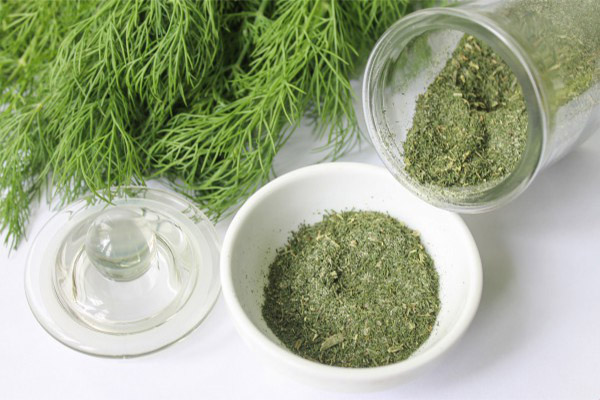
It is most convenient to use the herb when it is spread in glass jars (better if they are made of dark glass) or ceramic containers. It is important that these dishes are sealed tightly with lids to avoid moisture from the air.
Some housewives store dill in ziplock bags that sell coffee. It is important to rinse this bag well to eliminate the coffee flavor, and to dry it thoroughly.
In a tightly sealed container that does not allow air in, the dill will safely survive until next year's harvest.
You can put dried dill in paper bags and cotton sacks, but these porous materials will not be able to retain the spicy flavor for long, so such dried herbs should be used for a maximum of three months.
How dried dill is useful
Even grandmothers and great-grandmothers strongly advised to eat more dill both fresh and dried. In its dried form, it loses almost no vitamins or minerals and nutrients that are part of the fresh product. Moreover, in dried dill (in terms of grams) the concentration of useful substances increases, and the caloric value of the dried product is 7.5 times lower than fresh.
- Thanks to the presence of vitamin A, which has a positive effect on vision, the condition of the retina improves. The vitamin also has the ability to strengthen the body's immune system and stimulate white blood cell activity.
- Vitamin B1, or thiamine, helps to restore strength after increased physical exertion during work or sports and also stimulates the improvement of protein metabolism.
- Vitamin B2, or riboflavin, which is a component of many drugstores, not only has a beneficial effect on skin and eye health, but also accelerates wound healing and improves the function of the gastrointestinal tract.
- Vitamin B5, or pantothenic acid in another way, has a positive effect on patients suffering from alcoholism, and is used in the treatment of several liver diseases. It is also used to get rid of acne.
- Vitamin B9, or folic acid, is useful for pregnant women, as it is responsible for the normal development of the baby's organs, especially in the early stages. For actively growing children, this vitamin helps the proper formation of the circulatory system and helps strengthen the immune system, which, in turn, helps to strengthen the body more quickly after illnesses.
- Vitamin C, which everyone knows as ascorbic acid. It has a whole list of health benefits, from strengthening the immune system to acting as an antioxidant.
- Vitamin PP, or nicotinamide, regulates metabolic processes and is therefore recommended in diseases of the gastrointestinal tract, liver, diabetes. It is very useful for those who are trying to lose weight and therefore sits on various diets, sometimes the most fantastic and poorly balanced.
- Vitamin E - its fame is based on its antioxidant properties.
- Vitamin K normalizes kidney function and stimulates protein metabolism. However, some people are allergic to it, so they should be careful with dill or even abandon it altogether.
- Magnesium is most often used to relieve stress and fatigue, normalize the nervous system, establish normal sleep, and eliminate headaches. In addition, it stimulates the successful work of the intestines.
- Potassium as well as magnesium is necessary for normal functioning of the nervous system. Another function of it is to maintain a normal balance of acids and alkalis, maintaining the correct level of fluid in the body.
In addition to vitamins, dill contains a number of micro- and macronutrients that have a positive effect on the work of all human systems and organs.
- Iron. Its most important function is to participate in the synthesis of hemoglobin and transport oxygen in the tissues.
- Phosphorus. Participates in the construction of bones, teeth, is responsible for the condition of the skin, nails and hair.
Thanks to this rich complex of vitamins and other beneficial substances, fennel has a number of medicinal properties. It can reduce blood pressure, relieve spasms, reducing pain. Its carminative and urinating abilities have been widely known since ancient times. Ancient herbalists prescribed it for cystitis and other diseases of the kidneys and urinary tract, as well as to relieve bloating and flatulence. And it can be given even to infants to relieve colic.
In addition, this plant can heal wounds, especially irritations in allergies, as well as calm the nervous system, establishing a deep restful sleep and restoring emotional stability.
From this plant, decoctions can be prepared to purify blood vessels, lower blood pressure, and stabilize heart rhythm. Due to the vasodilating abilities of dill, it is recommended to the representatives of the male half of mankind to maintain "male power".
Dried dill seeds are used by young women to relieve pain during menstruation, and older ladies improve their health during menopause.
Where dried dill is used
Dried dill is not only a fragrant additive to soup or goulash, it is also used by folk healers in various medicinal recipes.
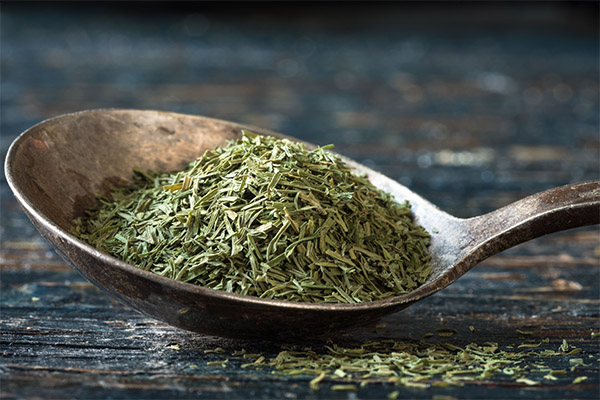
More often, of course, dill is used as a flavorful additive to various dishes - any meat, fish, poultry, stews and roasted vegetables, soups, salads. Dill is used in seasonings such as chopped suneli and adjika.
When pickling or marinating cucumbers and tomatoes for the winter, you can sprinkle a spoon or two of dried herbs in a jar. Good and fragrant sauerkraut, which added dried dill seeds.
It is important not to overdo it, so that this spice does not overshadow all other products with its smell. Dill herbs not only decorate the dish, but also improve appetite and improve the function of the digestive system.
For your information! To decorate the dish dried dill is not suitable, for this it is better to take fresh.
For medicinal purposes dried dill is used not only as an ingredient in various herbal gatherings, but also as a solo version - and in any quantity. And especially fashionable dachshund ladies use dill for making nourishing masks: in summer they put fresh herbs on the face, but in winter they steam dried raw material with a bit of boiling water, and when it is steamed, mix it with thick sour cream.
Cosmetic use of dried dill is due to the ability of its constituent ascorbic acid to relieve irritation and swelling, heal microcracks, and thanks to the presence of folic acid to remove acne and blackheads. And such components of dried dill as magnesium and calcium improve subcutaneous and intradermal blood circulation, which helps to reduce the appearance of couperose and improves complexion.
Due to its essential oils, dried dill, especially its seeds, are used in the perfume industry, in confectionary production, as well as in the wine industry.
In addition, due to the fact that dill has the ability to normalize the metabolism, it is recommended as a dietary source of vitamins and macro-and macronutrients in weight loss programs. In addition, this spice helps to cope with swelling, which is important for people who lose weight. Nutritionists recommend in such cases to prepare decoctions and infusions, and it is better to combine dill with dried parsley, which enhances its action.
What is better: to freeze or dry dill
There are two ways to preserve your summer dill crop all winter long in its natural state without using salt or preservatives. These are freezing and drying. Each has both advantages and disadvantages.
So, the undoubted advantages of drying is that the dried product is great in a closed container, perfectly preserving the spicy flavor. At the same time, due to the fact that the liquid is evaporated, the product becomes much more concentrated: just one teaspoon of dried dill is equal to a tablespoon in nutritional value and the presence of useful substances.
Dried dill can be mixed with other herbs grown in the garden, such as parsley, basil, and create fragrant compositions, making them for the winter. In addition, if you combine them with salt, adding also dried ground garlic, bitter chillies, onions, you get a product that is sold in supermarkets under the name "Tasty Salt". But unlike the purchased ones, you can create such a fragrant bouquet at home, which will be tasty to all members of the family.
The downside to drying dill, perhaps, is that you have to spend some time and attention in the process. In addition, if drying outdoors, you need a place to spread the greens, and using an oven is not very pleasant in the summer heat.
Freezing has advantages, too. It's the quickest way to prepare, and the greens can be put into the freezer directly in a bunch, slicing them just before they're sent to the pot, rather than chopping them. Dill can be kept in the freezer for a very long time, much more than a year.
But, alas, not everyone has a large freezer, which will include, in addition to fish and meat, and vegetables, and mushrooms, and even frozen dill greens. And this is a significant disadvantage of freezing.
In addition, vitamins, macro-and micronutrients and essential oils are preserved in dried dill in much greater quantities than in frozen dill. That is, from the point of view of the product's benefits, drying is preferable.
Properly dried dill, you can provide your family with a delicious healthy spice for the entire winter - until the next harvest.
«Important: All information on this site is provided solely for introductory for information purposes only. Please consult with a health care professional before using any of the recommendations. specialist before using any of the recommendations. Neither the editors nor the authors shall be liable for any possible harm caused by materials."


